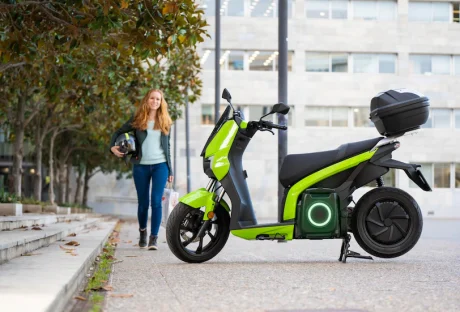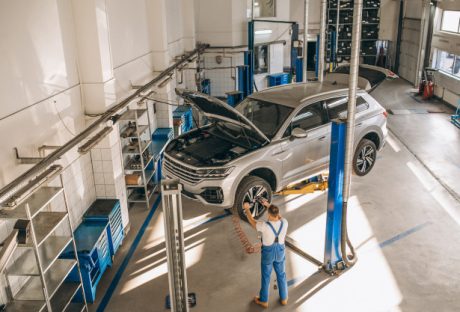Investing in a car in British Columbia transcends traditional notions of mobility and enters the realm of strategic financial planning. In a market flooded with countless models, certain car brands stand out for their potential to be sound investments.
This blog delves into the car brands renowned for maintaining value, durability, and brand prestige, making them prudent choices for savvy investors.
1. The Resilience of Luxury Brands: Mercedes-Benz and BMW
Mercedes-Benz epitomizes luxury and performance, making it a top choice for investors. Its models, from the executive-class S-Class to the sporty AMG range, are known for retaining value thanks to timeless aesthetics and engineering prowess. BMW’s lineup, including the popular 3 Series and luxurious 7 Series, is celebrated for blending dynamic driving experiences with cutting-edge technology, ensuring a high resale value.
2. Japanese Reliability: Toyota and Honda
Japanese brands Toyota and Honda are everywhere in British Columbia and are synonymous with reliability and value retention. Toyota’s range, particularly the Camry and Corolla, offers vehicles known for their longevity and consistent demand in the used car market. Honda’s lineup, including the Civic and Accord, boasts durability and efficiency, making these cars a smart investment for those seeking value over time.
3. The Allure of American Muscle: Ford and Chevrolet
American muscle cars, particularly from Ford and Chevrolet, offer unique investment opportunities. The Ford Mustang, with its rich heritage and evolving design, has a cult following that often sees older models appreciate in value. Chevrolet’s Camaro, another icon in the muscle car world, combines performance with nostalgic appeal, making it a sought-after model among collectors and enthusiasts.
4. The Rise of Electric Vehicles: Tesla
Tesla’s impact on the electric vehicle (EV) market makes it a noteworthy brand for investors. Models like the Tesla Model S have disrupted the auto industry with innovative technology and electric propulsion, becoming collector items. As the pioneer in EV technology, Tesla vehicles have become very popular on the streets in British Columbia and are anticipated to be valuable assets in the future automotive collector market.
5. Premium SUVs: Land Rover and Porsche
Luxury SUVs, especially from brands like Land Rover and Porsche, command a significant presence in the investment market. Land Rover’s Range Rover, renowned for its off-road prowess and luxury features, tends to hold its value well over time. Porsche’s SUVs, particularly the Cayenne and Macan, offer the performance of a sports car with the functionality of an SUV, making them appealing to a wide range of buyers.
6. The Exclusivity of Supercars: Ferrari and Lamborghini

Supercars from Ferrari and Lamborghini are more than mere vehicles; they are investments in automotive art. Ferrari’s models, such as the F8 Tributo and 812 Superfast, are known for their exclusivity and often appreciate in value. Lamborghini’s vehicles, including the Huracán and Aventador, are coveted for their dramatic designs and limited production runs, ensuring a high demand among collectors in BC.
7. The Dependable Swedes: Volvo
Volvo’s commitment to safety and quality makes it a unique contender in the investment market. Classic models like the P1800 and newer innovations like the XC90 hybrid are gaining attention for their investment potential. Volvo’s focus on sustainability and safety, combined with its distinct design philosophy, makes certain models particularly appealing to niche collectors.
8. The Classic Appeal: Volkswagen
Volkswagen holds a special place in the world of automotive investments, especially with its classic models. The Beetle, one of the most recognizable cars globally, has a dedicated following and certain models have seen an increase in value. The Microbus, another iconic Volkswagen vehicle, has become a collector’s item, with restored and well-maintained versions fetching high prices.
9. The British Elegance: Jaguar and Aston Martin
British car manufacturers Jaguar and Aston Martin are renowned for their elegance and performance. Jaguar’s classics like the E-Type and modern vehicles like the F-Type are known for their beauty and engineering, making them attractive for investment. Aston Martin, the brand famous for its association with James Bond, offers models like the DB11 and Vantage that are not only exhilarating to drive but also hold their value well due to their exclusivity and craftsmanship.
10. The Tech-Savvy Choice: Audi
Audi stands out for its blend of technology, performance, and design. Models like the Audi A8 and the R8 combine advanced engineering with luxurious features, making them desirable in the resale market. Audi’s commitment to innovation, especially in areas like autonomous driving and electric powertrains, positions certain models as potentially valuable investments for the future.
11. The Performance Giants: McLaren and Porsche
McLaren and Porsche are revered in the realm of high-performance sports cars. McLaren, with its racing heritage, offers vehicles like the 720S and the GT, known for their speed and advanced aerodynamics. Porsche’s 911 and the 718 Boxster/Cayman series are not just thrilling to drive but also tend to maintain their value, thanks to their iconic status and timeless design.
12. The Unique Appeal of Subaru and Mazda
Subaru and Mazda offer unique investment potential with their distinct approach to car manufacturing. Subaru’s vehicles, particularly the WRX and the Outback, are known for their all-wheel-drive capabilities and robust build. Mazda’s MX-5 Miata, celebrated for its driving dynamics and affordability, has a loyal fanbase and models in good condition have been known to appreciate in value.
Driving Towards the Future: Making Informed Car Investment Decisions
Investing in or financing a car in British Columbia requires considering various factors, including brand reputation, model history, and potential for appreciation. From the luxury and performance of Mercedes-Benz and BMW to the timeless appeal of classic Volkswagens, and the innovative edge of electric vehicles like Tesla, the market offers diverse opportunities. Whether it’s the robustness of Japanese brands, the allure of American muscle, the exclusivity of supercars, or the unique charm of classic and high-performance vehicles, each brand and model presents its own set of advantages for investment.
Read Also:






















